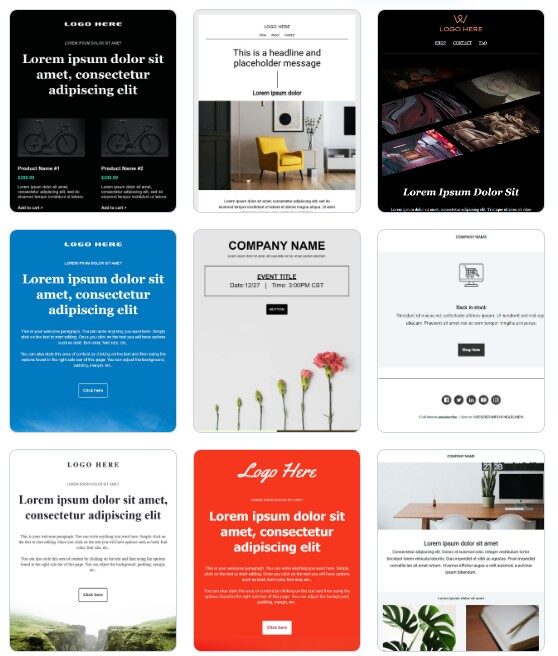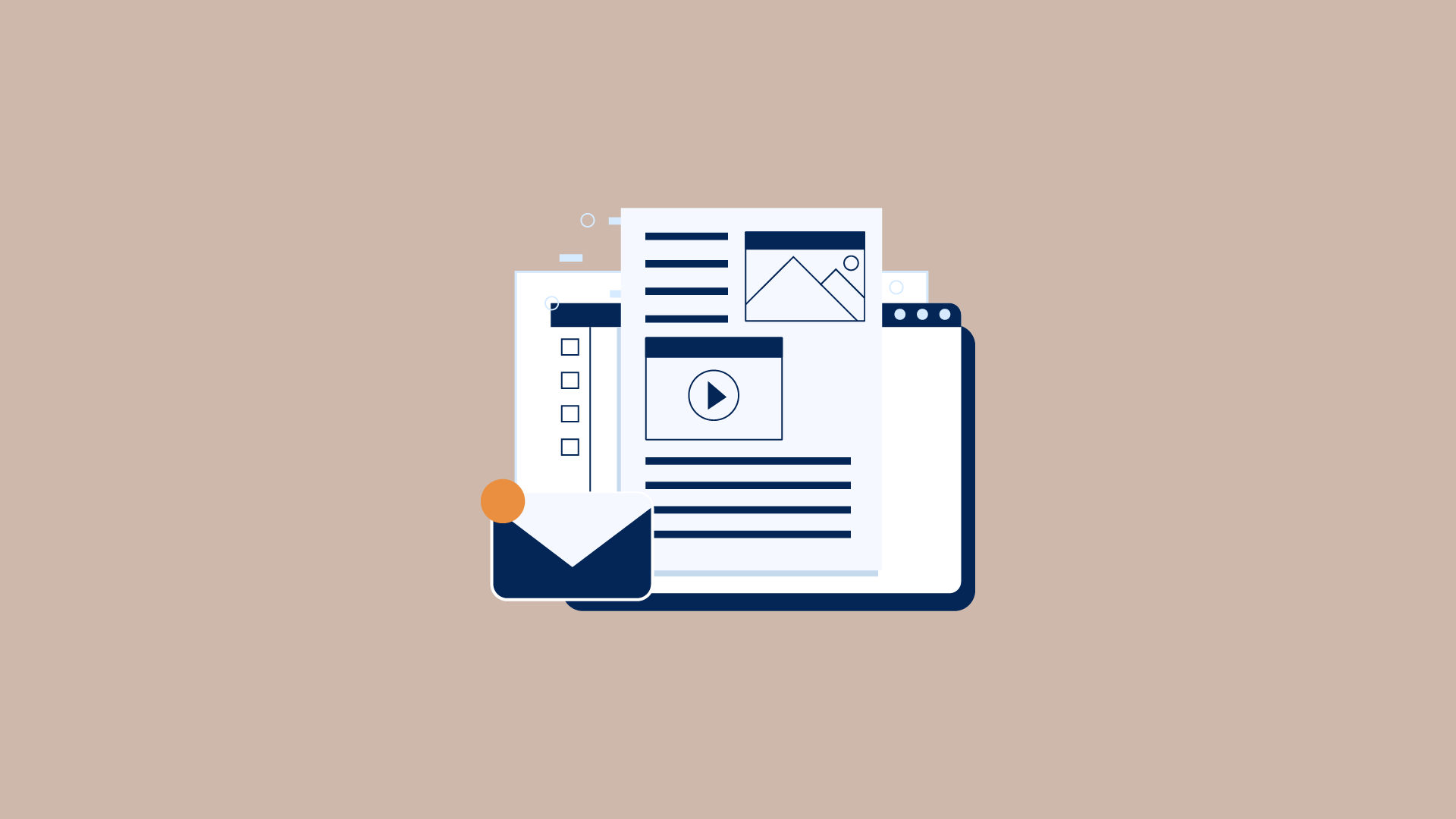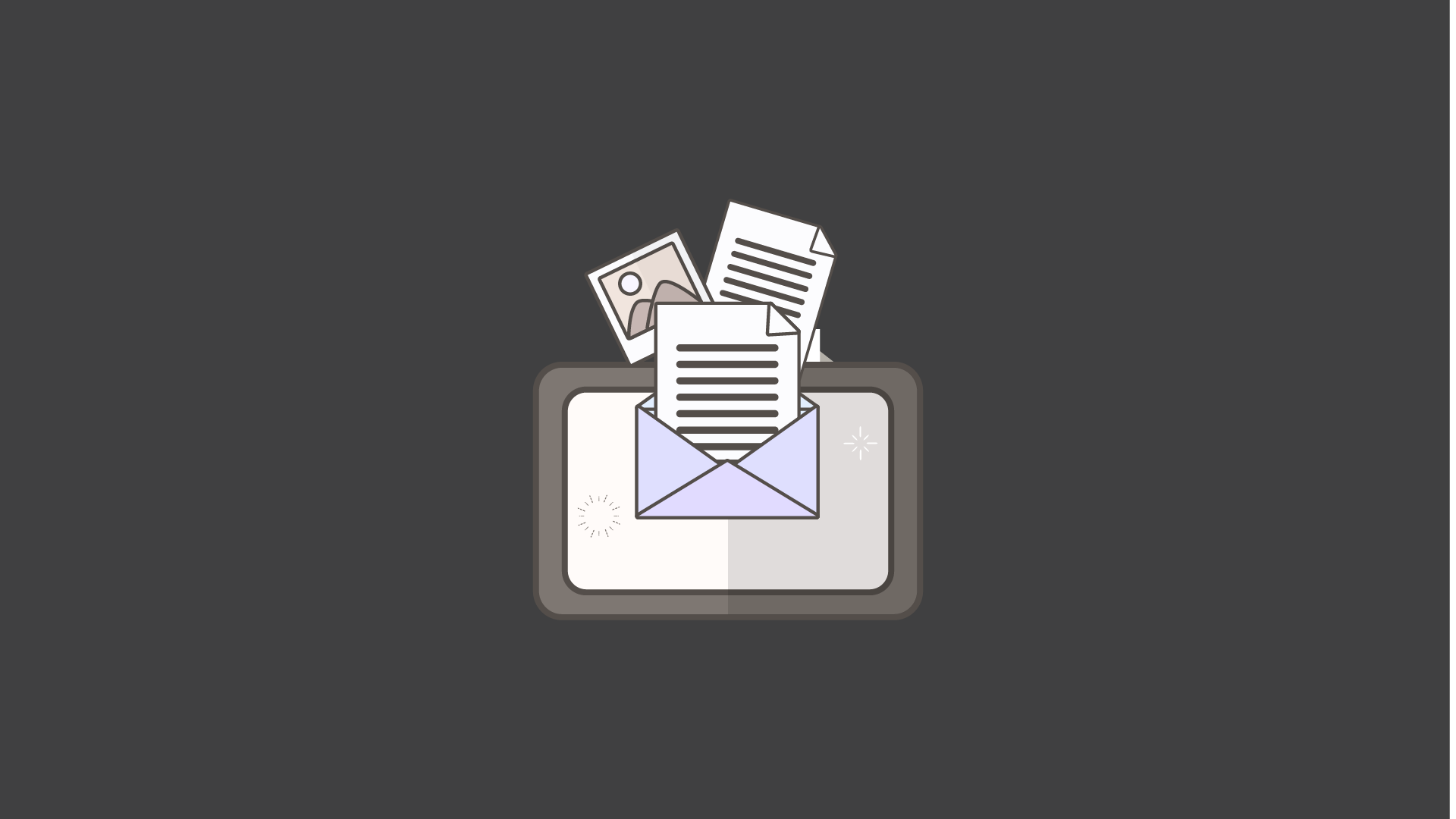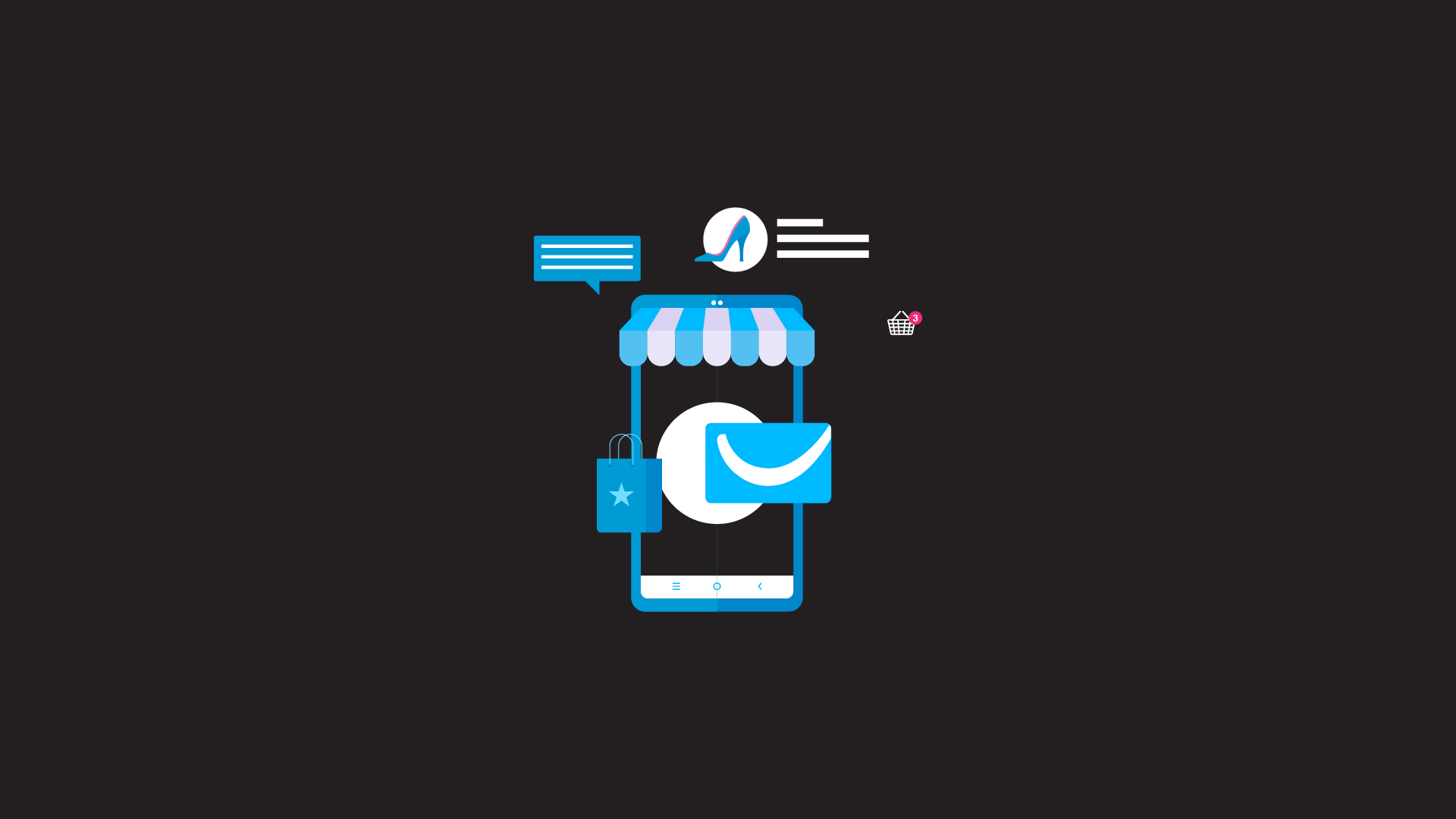Email marketing is one of the oldest methods of marketing. The first email sent for an email marketing campaign in 1978 produced $13 million in sales.
Email marketing is a highly effective and cost-effective channel. For every dollar spent on email marketing, businesses receive $36 back in return.
Even so, it doesn’t show any signs of weakness and continues to rise in popularity among marketers, businesses, and users. The use of email can build a strong relationship with customers. Also if used correctly, it can increase sales and revenue growth.
Today, we’re going to talk about email marketing and why you should consider adding it to your digital marketing strategy.

What is Email Marketing?
Email marketing is a form of marketing that uses email to send messages to prospects and customers. It’s an effective way for businesses to reach, engage, nurture, and convert prospects into paying customers.
What makes email marketing effective is that a brand offers valuable information to its audience or subscribers.
Email offers several benefits as a marketing channel:
- It’s the most direct way to communicate with your audience outside of talking face-to-face.
- When done well, it can help you build long-term relationships with your subscribers (or “leads”).
- It allows you to nurture leads over time until they’re ready to make a purchase.
- Email gives you a chance to promote your valuable content to audiences interested in what you have to say.
- It can boost your brand awareness and keep your brand at the top of the preferred list by prospects.
- Through email marketing, you can delight your customers by helping them succeed and reach their goals.
Why Does Email Marketing Exist?
Email marketing is a way for brands to communicate with their customers. It’s also an opportunity for every business to sell its products or services.
Many view email marketing as an outdated tactic. However, it’s been proven to be effective time and time again. The key here is understanding what you want your email campaigns to accomplish before creating them. That will help ensure that you’re creating campaigns that are effective in helping you achieve your goals.
Understanding what your audience wants from you is pretty simple once you start thinking about it. If they signed up for your email list, they’re already showing a little interest in what you have to say!
Maybe they’ve purchased something from you at some point in the past. Even if they haven’t bought anything from your company, they could still be interested in learning more about it.
Important Email Marketing Statistics
- According to Statista, The global email marketing market was valued at $7.5 billion in 2020 and is expected to reach $17.9 billion by 2027.
- There are 4 billion daily email users. This number will go up to 4.6 billion by 2025. (Statista, 2021)
- More than 306 billion emails are sent and received each day. (Statista, 2021)
- Active email accounts surpassed 5.6 billion in 2019. (Statista, 2019)
- Only 64% of small businesses use email marketing to reach customers according to Campaign Monitor
- For every $1 spent, email marketing generates $42 a high return on investment of 4200%
- About 1 in 5 email campaigns is not optimized for mobile devices.
- According to statistica, 66% of marketers believe AI is a way to optimize send times.
- Email marketing is 40% better at converting than Facebook and Twitter.
See more email marketing stats on this list of email marketing statistics.
How to Get Started with Email Marketing
Email marketing is an effective way to offer campaigns and deliver a message to your customers.
A good email marketing campaign can help boost sales, drive traffic to your website, or increase brand awareness. Email marketing is cost-effective and has the potential to reach a wider audience than other forms of advertising.
Before you start, know where you’re going. You’ve probably heard it before: “Failing to prepare, is preparing to fail.”
A lot of people will say that—especially personal trainers at gyms. In the case of email marketing, it’s accurate. Having a vision in mind will serve as a reliable guide when things get confusing or overwhelming.
Here is how you can get started with email marketing.
1. Start by setting your Goals
First things first, before you get started with email marketing, it’s important to have a clear idea of what you want to achieve.
- Do you want more conversions?
- More traffic?
- Brand awareness? If you cannot define the goal of your email campaign, stop now. Email marketing campaigns are the most successful when they are based on a specific purpose. This serves as the call to action for each recipient. What am I trying to accomplish with this email? What do I want my recipients to do?
When setting your goals, make sure they’re SMART goals: specific, measurable, achievable, relevant, and timely. If you aren’t sure what questions to ask yourself when creating (SMART) goals then there are plenty of examples online like this one from Fine Media: SMART Goals: The Key To Project Success [+Free WORKSHEET].
“Be bold” is usually good advice but when trying to create your first campaign or just getting started with email marketing it can be easy to take on more than you can chew. Make sure that your goal is relevant and realistic for what you can achieve given the resources at hand.
2. Define your Target Audience and Build your Email List
Once you have identified your goals for the email campaign, define your target audience as specifically as possible. In doing so, create segments within your database if necessary. Who will receive this email? How many people will be in each segment of my list? Who will not receive this mail (and why)?
With these answers in mind, create a list of contacts by uploading an existing database or having people sign up via web forms on your website.
This is where it pays off if you’ve already been building lists in other channels such as social media and offline events. Is there any data appended from those channels into a central database that can be used in this instance?
If not, then don’t worry, there are plenty of ways new contacts can be built from scratch using various methods.
As long as you know who it is that would react favorably towards the content that you’re about to send them. In other words, if you know who exactly would like what you have created – then nothing should stop you from creating your mailing list.
3. Decide on the Type of Email Campaign
When you’re looking for a way to reach out to your audience, email marketing is one of the best ways to do so. You can start by learning about the types of email campaigns that exist, then decide which is best for your audience.
Some common types are:
- Welcome Emails. A welcome email is sent out when a subscriber enters their email address into your sign-up form or subscribes to your newsletter. You can use these emails as an opportunity to showcase some of your best content and explain what they can expect from your company in the future.
- Content Emails: Content emails are all about sharing information with subscribers. This could include useful tips and tricks, behind-the-scenes content, or thought leadership pieces from your industry experts.
- Newsletters: Newsletters are used to share relevant news from your organization with subscribers. They’re typically sent out regularly and include multiple pieces of content that strengthen the relationship between a brand and its audience.
- Lead Nurturing Emails: Lead nurturing emails are sent out when someone has shown interest in your product or service. We recommend automating this process so that whenever someone fills out a form on your site, they will receive an email thanking them for their submission, and asking them to schedule a follow-up call so that they can discuss their questions in more detail.
With the right email marketing software, you can also set up the system so that whenever the form is filled out during business hours, you get an immediate notification—just in case someone needs help right away.
4. Create an Email Marketing Schedule
When it comes to marketing your business, there are a lot of moving parts. And when you’re just starting and trying to figure out how to tackle everything, it can be hard to know where to start and what’s most important.
We recommend creating a schedule for your email marketing outreach. This is the best way to ensure that you’re staying in touch with your audience regularly without overloading them with too many emails at once.
In addition, it helps you keep track of what you’ve already sent so there’s no confusion when planning future emails!
Determine how many emails you want to send per month, and then create a spreadsheet that has days of the week across the top, and weeks down the side.
You can fill in a description of what each email will be about, who the target audience is, where you’ll get the content for it, and when it should be sent out.
Next, you have to create accounts on popular email marketing platforms such as ActiveCampaign or GetResponse. You should also familiarize yourself with their user interface so that you know how to use them when it’s time to send out your emails.
5. Create Content for your Emails
You need to make sure that the content you create is relevant to what your target audience wants to hear about.
It’s also important to know what type of information is most appropriate for the type of campaign you’re running. For example, if you’re running an eCommerce campaign, then it would make sense that you’d want your content to be more product-focused.
On the other hand, if you’re sending out newsletters or other general information, then it would make sense that you’d want your content to be more informative.
You should also consider the tone of voice and personality that best suits your brand when writing email copy. This will ensure consistency across all communication channels. Lastly, figure out who should receive your email.
If you’re selling a product, then maybe only people who’ve bought that product before are the ones who should get an email about it.
For example, if you’re trying to keep people up-to-date on what’s going on in your company, then everyone interested in the company should get an email about it.
6. Measure Results
With any marketing campaign, it’s important to keep track of the metrics you’re using to gauge the success of your efforts.
Here are a few metrics to keep in mind when you’re measuring results from your email marketing campaign:
- Open rate -How many people opened your email after receiving it?
- Click-through rate (CTR) -How many people clicked on a link in your email?
- Conversion rate -How many people took an action you wanted them to take (like buying a product or answering a survey).
Start by looking at your open rates and conversion rates. If you see that your open rates are low, it’s time to start thinking about ways to improve your subject line.
If you notice that your conversion rate is lagging what it should be, take a closer look at the content of your email. What do you think might turn people off? Is the content relevant to their interests?
You should also keep an eye on how many people unsubscribe from your list after receiving an email. If you’re noticing a trend in which more and more people are unsubscribing after each email, consider whether or not they are receiving relevant content. You can use a tool like A/B testing to try different versions of an email and see which one gets the best response.
In addition, there are some great tools out there that will help you measure your results and adjust accordingly. ActiveCampaign has a feature called “A/B Split Testing” that allows you to send two versions of the same email at once and compare the performance of each one.
These tools make it easy to see what’s working and what’s not. Then, tweak your campaigns until they’re performing better than ever before.
Email Marketing Best Practices
Email marketing best practices include:
- Using email marketing software. An email marketing software is a type of platform that you can use to create and send emails, manage subscribers, etc.
- Building an email list from. Avoid buying an email list from someone else’s database. Building an Email list can help nurture relationships with your audience, and you can reach the people who want to hear from you.
- Creating an email marketing strategy and plan. A strategy is how you’re going to approach building and promoting your business through your emails; a plan is how much content you need to cover to achieve the goals set out by your strategy.
How to Choose Email Marketing Software
With the rise of email marketing software, you can easily build customer relationships. Also, you can create targeted email marketing campaigns that convert.
The best email marketing software combines ease of use with professional-level analytics and segmentation capabilities. So you can customize your emails and measure their effectiveness how you wish.
Here’s what to look for when choosing an email marketing tool:
Campaign management capabilities
Campaign management ensures that you can organize your campaigns and analyze their performance after they launch. This is important for tracking how effective your email marketing efforts are. Also, for organizing them in a way that makes sense for your business.
Email marketing is only as good as the content you send to subscribers. Before signing on with any platform, take some time to assess its campaign management capabilities. How easy is it to create, edit, and organize your content?
Similarly, how much control do you have over the design of your emails? A good platform will provide a rich set of features that let you personalize your message with ease.
Integrations
Integrations with other tools in your marketing stack should be available. If you use multiple software tools in its marketing stack make sure the provider offers integration with those programs.
Make sure that the software integrates with other tools you use, such as your CRM and social media platforms. This will make it easier to keep track of all your marketing activity in one place and ensure that everything stays organized.
Data management
The best email marketing software will collect customer data from your website, such as name, address, phone number, and purchase history. It will help you identify which customers are more likely to open and respond to your emails.
It should also allow you to import more data from social media or other sources. This will help you create a more complete picture of your customers’ needs and interests.
The right software should have robust data management capabilities so you can easily access key information about your customers’ behaviors and interests.
You’ll also want an interface that allows you to segment out groups based on certain criteria (like age or location) before sending emails. This allows you to send personalized emails instead of generic ones, which increases engagement rates significantly.
Features Expertise
Look for an email marketing tool that offers expertise in eCommerce. Many tools are designed primarily for B2B marketers or general online businesses.
Ecommerce companies, however, have specific needs when automating their campaigns and providing personalized messaging based on customer interactions. The best email marketing software has features like A/B testing.
You should make sure your email marketing software offers all the features that you need to market your business successfully.
Check if the software includes templates and the ability to upload contacts and track performance. You can also find out what other features each software offers by checking out our list of the best email marketing tools.
Clients
Check out the companies already using the platform. Paying extra for a proven solution is worth it. Ask yourself these questions: Are they companies like yours? Do they have a similar-sized business or a similar feel to yours?
Is it for personal use or professional use? Different types of email marketing software are made for different kinds of people. If you’re using it for business, you’ll want to make sure that it’s high-quality and reputable.
Another key consideration should be how much support the software offers—from phone support to live chat and user forums.
Customer support can help you troubleshoot any issues you may face with your software. They will make sure that your email campaigns are as successful as possible.
Our Email Marketing Sofware Top Picks
How to Build an Email List
Let’s go through the building blocks of list building. First, we have lead magnets. A lead magnet is any tool used to entice potential subscribers to opt into your list.
Lead magnets can take various forms such as a free E-book, an online course, or a free trial. It can also be anything else that gives your audience value and encourages them to sign up for your email list.
Creating a Lead Magnet
Creating a lead magnet can be challenging, but it’s essential to the success of your inbound marketing strategy. While there are many different types of lead magnets you could create, here are three ways to create an effective lead magnet:
- Make your offer actionable and solution-focused. An effective lead magnet solves a problem for your audience. Make sure you’re creating something that will help them solve a problem they have, not something that just sounds interesting to you.
- Make it easy to consume. Your lead magnet should be easily digestible by your audience. For instance, a long eBook or webinar isn’t going to work for everyone, especially if it’s their first time interacting with your company. Think about how long your average customer spends on a website and what format would work best for them. For example, an infographic might be best if people spend less than 30 seconds on your site.
- Create offers relevant to each stage of the buyer’s journey. Not all offers are created equal. Some are better suited as awareness-stage offers while others would be best used in the consideration or decision stages of the buyer’s journey. Make sure you’re segmenting your offers and making an offer appropriate to the stage of the journey at which they’re currently engaging
Create an Opt-in Form
The second element of list building is an opt-in form. An opt-in form is a form on your website and prompts visitors to subscribe to your email list in exchange for a lead magnet. You can place these forms throughout your website and customize the copy and design so it aligns with the look and feel of your site.
Here are five things to keep in mind to optimize your opt-in form:
- Create an attractive design. Your opt-in form should match your brand’s look and feel. If it doesn’t, it will seem out of place, and people won’t trust it. They’ll think it’s a phishing scam, and they’ll delete it without a second thought.
- Make your copy relevant to the offer. Your copy should communicate what the offer is and what benefit it provides to the user. This will help you build trust with the reader, and make them more likely to sign up.
- Take the form simply. Don’t ask for too much information; if you need to collect data from users for any purpose, try to do so after they’ve already signed up for whatever offer you have available. People are generally reluctant to give away their personal information if they feel it’s too much an ask.
- Use Double Opt-In Confirmation. When someone subscribes to one of your offers, have them click one last time to confirm their subscription. This is one way to ensure you don’t get into their spam folder when you send your campaigns.
- And finally, test the workflow from start to finish, to make sure it works. Make sure your form goes where it needs to go when someone signs up.
How To Send a Successful Email Campaign
To send a successful email campaign, you first need to choose an email marketing service provider.
Once you’ve chosen that platform, you need to follow email marketing best practices, segment your recipients into different lists and personalize your emails with each person’s name if possible.
It’s also important to incorporate automation into your email marketing and use templates so you can recycle them without having to design the same thing from scratch each time.
In this step-by-step section, we’ll take a look at how to create a successful email campaign.
1. Choose an Email Marketing Software
The first step in sending a successful email campaign is choosing an email marketing service provider. Most of these services provide easy-to-use templates that will have your business looking professional right out of the box.
If you’re new to coding or don’t have time to do it yourself, there are plenty of options available for creating a newsletter template that looks sharp and is easy to read on all devices.
The most popular providers include MailChimp, ConstantContact, and AWeber, but there are many other options as well—including some great free plans for those just starting out.
By choosing a reputable service, you’ll be able to monitor open rates and see how effective your campaigns are so you can make any adjustments necessary for future emails.
For instance, if you need more automation features, then maybe ActiveCampaign would be better for you. Or maybe you use Shopify for your eCommerce platform and want to integrate email marketing with it—in that case, Klaviyo might be the way to go.
2. Use Email Marketing Tips
Once you’ve picked an email marketing service, it’s time to start using it! To make sure your emails get delivered, use a good subject line that clearly states why someone should open them. Make sure that your emails are organized in a way that makes sense to the reader by making them easy to scan quickly.
Also make sure your subject line is compelling enough for people to open the email, but not so much so that it sounds like spam or false advertising.
Here are some tips
- Provide value—but not only information. People don’t want to be told what to do; they want to be enabled and inspired to take action themselves. Provide some of the information necessary for readers to solve their problems, but don’t give away all the answers. For example, after briefly outlining why it’s important for people who’ve recently moved into new apartments to repaint the walls, provide links for paint colors that are preselected by design experts to make the process as easy as possible.
- Use a call-to-action (CTA). After giving your audience just enough information and inspiration to get started on something, direct them toward an action you want them to take: “Call us today at 888-123-4567,” or “Fill out this form.”
- Show that you care about your customers’ success by providing additional resources and steps they might find useful in making progress towards their goals—and let them know that there are experts like yourself who can help if needed: “Having trouble? Contact us.”
- Make your audience feel special by offering exclusive insider tips or seasonal discounts related to what they’re interested in learning about.
This tactic will increase open rates because people feel valued and important when they receive personalized emails from businesses (instead of automated marketing emails).
3. Segment your Mailing List (Email Segmentation)
Segmentation refers to dividing up your customer base according to different criteria so that you can send them messages specifically tailored to their needs and preferences.
Your customers are unique people with unique interests, preferences, and lifestyles. It makes sense that they’d want to receive content tailored specifically to them. Make sure your emails are relevant for each person who receives them by segmenting your list into groups based on factors like age, gender, geographic location, and more.
You can then create email content that’s customized for each group. For example, if you’re sending an email campaign promoting new products in your online store, you could segment your list into “men” and “women” groups and send product recommendations only for the gender that which each recipient belongs.
By grouping contacts into custom segments based on their interests, behaviors, or demographics, you can tailor messages and content so they’re personally relevant to each person who reads them.
Let’s say you have a group of contacts who are all interested in receiving information about a certain topic (for example, pet owners) but also care about different types of pets (dogs, cats, and fish).
You can use a tool like ActiveCampaign to segment your contact list based on those topics and then send different versions of your campaign based on which segments they’re in.
For example, dog owners would receive an email with content related only to dogs, while fish owners would receive an email focused on fish.
By knowing what their contact preferences are, you can create relevant content that will get them to open it—and maybe even take action! when there’s a new post related to a category they’ve shown interest in.
4. Be more Personal With your Content
You should never send a “one size fits all” message, even if you’re just sending it out to dozens or hundreds of subscribers. Instead, use their previous behaviors (such as purchases or website visits) to determine what they might like. This way you can tailor your message to them.
You want to establish a relationship with your customers. That means making sure your emails feel personal and tailored to them.
You can make this happen by addressing subscribers by name in the subject line and body of your emails as well as segmenting your email list based on your audience’s preferences.
This will make them feel like they’re receiving information that’s relevant to their interests, which can help you build trust with them. This might sound like a lot of work, but it’s not that hard at all. You just need to take some time to think about what information would be more helpful for your subscribers.
For example, if someone signed up for a newsletter about weight loss tips, then they’re probably interested in losing weight. If this is the case, then an email about health and fitness might be a great option for them.
5. Use Email Marketing Automation
Even when your emails feel personal to each customer, it can be difficult to manage everything that goes into an effective campaign—especially if you have a large list.
That’s why it’s helpful to use an automation tool like ActiveCampaign for some (or all) of your campaigns.
With automation, you can schedule emails ahead of time and send welcome emails when someone joins your list or other automated messages when someone performs a certain action (like downloading an eBook).
This way, you don’t have to manually send out emails every time someone completes one of those actions. It also ensures that everyone who takes those actions receives the same follow-up email.
6. Use Email Marketing Templates
A successful email marketing campaign is a product of clear communication and an appealing design. To make sure your emails meet both of these requirements, you should use an email template to create the content of your message.
Email marketing templates are a great way to get started because they provide the structure for your message, allowing you to more easily create engaging content.
The best email templates also make it easy to test your campaigns and give you the option to send them out automatically, which means less time spent building campaigns manually and more time spent on other aspects of your business.

When composing an email, it’s important to keep some key things in mind. First of all, you have only a few seconds to grab your recipients’ attention and encourage them to continue reading.
Secondly, your style and tone must be appropriate for your audience. A business-to-business email might be very straight-laced, while a business-to-consumer one should show more personality.
The best way to ensure that you’re getting these elements right is to use an email marketing template. Templates also help prevent you from making technical errors in the message itself. You can even create several templates for different situations (for example, a customer who hasn’t opened their latest purchase yet versus one who has).
Because we all get so many emails every day, you need to make sure that the ones you send are perfect every time—and with a little preparation and foresight, they will be.
7. Create Your Campaign
Now that you’ve chosen your template, it’s time to create your campaign. This is the fun part—you can start by adding images or setting up an automated welcome series for new subscribers.
Tips to Create Effective Email Campaigns
To have a successful email marketing campaign, you must do the following:
- Follow best practices and make sure your emails comply with the CAN-SPAM Act and GDPR.
- Know your target audience and research their needs so you can provide them with what they want.
- Make it personal by sending emails from someone who works for your company instead of just a generic “Contact” address.
- Help your customers by showing them how to use or solve problems with your product or service.
- Have a call to action that tells people what to do next, such as click-through or purchase after reading the email content you sent them.
- Use email marketing software that can help with creating, sending, and tracking campaigns to learn which parts work best at getting people interested in buying from you again so they will come back again later on their initiative without any prompting from other sources outside of themselves (i.e., family members who recommended something new).
- Use email marketing automation features like drip campaigns so all emails are sent automatically without having any further input required once everything else is set up properly beforehand first beforehand before everything else gets done correctly.
Email Regulations
CAN-SPAM Compliance
This regulation affects email clients and businesses with a digital marketing presence, and it controls the use of commercial emails (there are certain regulations for non-commercial emails).
CAN-SPAM outlines commercial email standards and gives your customers the option to unsubscribe from your email list. We want to make sure we’re only sending emails to customers who want to receive them.
We are required by law to:
- Not use misleading or false headers, return addresses, or subject lines
- Identify the message as an ad
- Include our physical address in all messages
- Give recipients an obvious way to opt-out of receiving future messages
- Process opt-out requests promptly
- Monitor what others are doing on our behalf
In short, CAN-SPAM requires that all commercial emails include a way to unsubscribe from your emails and that you honor any such requests within 10 business days.
Further, you must provide accurate information about where the email came from and give your email a subject line that makes sense for its content. The FTC also requires that each business must have an established privacy policy in place.
For more information on CAN-SPAM regulations please visit their website to ensure you are compliant.
GDPR Compliance
The General Data Protection Regulation (GDPR) is a regulation in EU law on data protection and privacy for all individuals within the European Union (EU) and the European Economic Area (EEA). It also addresses the export of personal data outside the EU and EEA areas.
The General Data Protection Regulation is a set of new rules for handling customer data. It’s a big deal, because this applies not just to companies in the European Union, but any business that works with people who live there.
Just like AN-SPAM, GDPR is about giving your customers the right to choose. They choose your emails. They choose to hear from you. They choose your products. And that is exactly what inbound marketing is about.
How to Analyze Email Marketing Data
If you’re using email marketing to promote your business, you have a lot of data at your fingertips.
But if you aren’t using that data to figure out what’s working, and what isn’t, are you really taking full advantage of those tools?
Many businesses are already doing this by setting email marketing KPIs, conducting A/B testing on their emails, adjusting their emails according to the findings from their testing, and using an email marketing report template to make sure they have the right metrics at hand.
Here’s how to use that data and improve your email marketing strategy:
Set your KPIs
A key performance indicator (KPI) is any metric that can help you track your progress towards a business goal. For example, if your goal is to boost brand awareness and grow monthly subscribers by 10%, then monthly signups would be an excellent KPI.
When analyzing your email marketing data, KPIs allow you to measure your progress toward achieving specific goals.
Know what you want to get out of your emails: Are you trying to build brand awareness? Drive website traffic? Increase sales? Set some goals for yourself so you know whether or not you’ve achieved them.
The best place to start is by identifying what email metrics are important for your business to track. This will help you understand where to spend time as you take an in-depth look at your data and make it actionable.
A few common email marketing KPIs are:
Open Rate
Your email open rate will give you a sense of how interesting your subject lines are and the quality of your sender name and sender address. It’s also an opportunity to segment your list according to your interest in specific topics.
Try asking subscribers to select the topics they’re interested in when they opt in so that later you can send them emails about those topics. You’ll have a higher open rate and more engaged readers.
Clickthrough Rate
The click-through rate (CTR) for each link in your emails indicates how well the content resonates with subscribers and whether the value proposition is clear enough. If someone clicks through but doesn’t ultimately
Conversion Rate
The number of people who responded (e.g., purchased a product) after opening an email.
To understand how to set KPIs, it’s important to define what you hope to get out of your campaign before beginning it.
For example, if you’re trying to increase brand awareness, you might set your KPIs around open rate and click-through rate. The more people who see and engage with your content, the more they’ll remember your brand.
If, on the other hand, you want to drive sales or boost leads generated from your website, conversion rate and ROI will be your key metrics.
Unsubscribe Rate
The number of recipients who unsubscribed from your service.
Run A/B testing
A/B testing is a method of comparing two versions of something against each other to determine which one performs better.
When it comes to emails, A/B testing involves sending out two versions of the same campaign. You send one to Group A and another to Group B—and then measuring how well each group responds.
The point of A/B testing is to find out which version of your campaign was more effective so that you can then use that version in all future campaigns.
Try multiple versions of the same email and see which one performs better. You can measure this by how many people opened the emails, how many clicked through, or several other factors. Whichever version gets a higher click-through rate is the one that’s working best for your audience. Send that version next time.
Testing out different variations of your email can be an easy way to see what’s working, and what isn’t. You might try varying the subject line, color scheme, or call-to-action button color.
Use Email Marketing Reporting
When your marketing strategy is based on data, you can make informed decisions and know that you’re making the most of your budget.
But it’s not enough to simply go over your email marketing data and see if your open rates are growing or declining. You need to use your findings to adjust your strategy accordingly. When you do this you will see a positive impact on your bottom line.
To get the most out of your efforts, you need to analyze your email performance data. This can be a daunting task for anyone who’s not a numbers person.
When you know how to analyze email marketing data, you can adjust your strategy in real-time. That way you can improve your open rate, click-through rate, conversion rate, and more.
To help you do just that, email marketing software like ActiveCampaign, GetResponse, and Hubspot makes it easy to analyze this data to:
- Evaluate the performance of each email campaign
- See how many people open your emails
- Track how many people click through links within your emails
- Determine which days are best for sending emails
- Compare the performance of different subject lines
Your Audience Can Benefit From Your Expertise
If you’re a small business owner, your audience likely values your expertise. Whether you sell a physical product or a service, you have unique knowledge and know-how to share with them. Show them how they can benefit from this knowledge.







